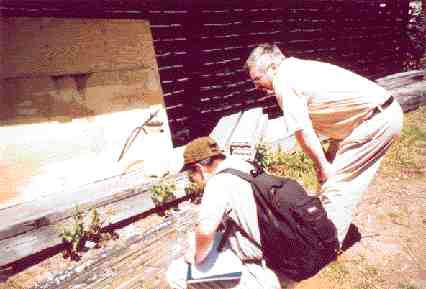Partners
The partners plan a series of six drill holes to test an area 1-2 km south of the property’s Boundary zinc-copper deposit, where re-logging of old diamond drill holes has revealed the same rock units that hold the Boundary deposit. Conductors detected in earlier air and ground electromagnetic surveys are known in the area, and a boulder carrying 8.6% copper and 1.35% zinc was found down-ice.
Boundary, with a resource of 480,000 tonnes grading 3.8% copper, 3.3% zinc and 0.4% lead, plus 26 grams silver and 0.3 gram gold, has been proposed as the first mine on the property. A small open-pit operation there could provide cash flow for underground development at the much larger Upper Duck massive sulphide deposit.
Two other holes are to test a reflective body found in a 1998 seismic survey commissioned by
An earlier drill hole, 500 metres northwest of the target, intersected the Boundary stratigraphy over a 125-metre core length that carried disseminated pyrite and traces of sphalerite, suggesting that the seismic reflection could be on a horizon where there is evidence of mineralizing activity.
The partners will be doing borehole electromagnetic surveys on both the holes in the area of the seismic reflector, to see whether there are electromagnetic conductors in the area.
Thundermin and Queenston expect to complete the second phase of a feasibility study on the Duck Pond project from their consultants, MRDI Canada, by the end of March. The forthcoming report will include a reserve calculation for the Duck Pond project.
So far, the project as a whole carries resources of 6.2 million tonnes grading 3.4% copper, 6.2% zinc and 1% lead, plus 63 grams silver and 0.8 gram gold per tonne. The largest mineral deposit, Upper Duck, contains 4.6 million tonnes of that resource, grading 3.6% copper, 6.6% zinc, 1.1% lead, 69 grams silver and 1 gram gold.


Be the first to comment on "Drills turn at Duck Pond (February 26, 2001)"